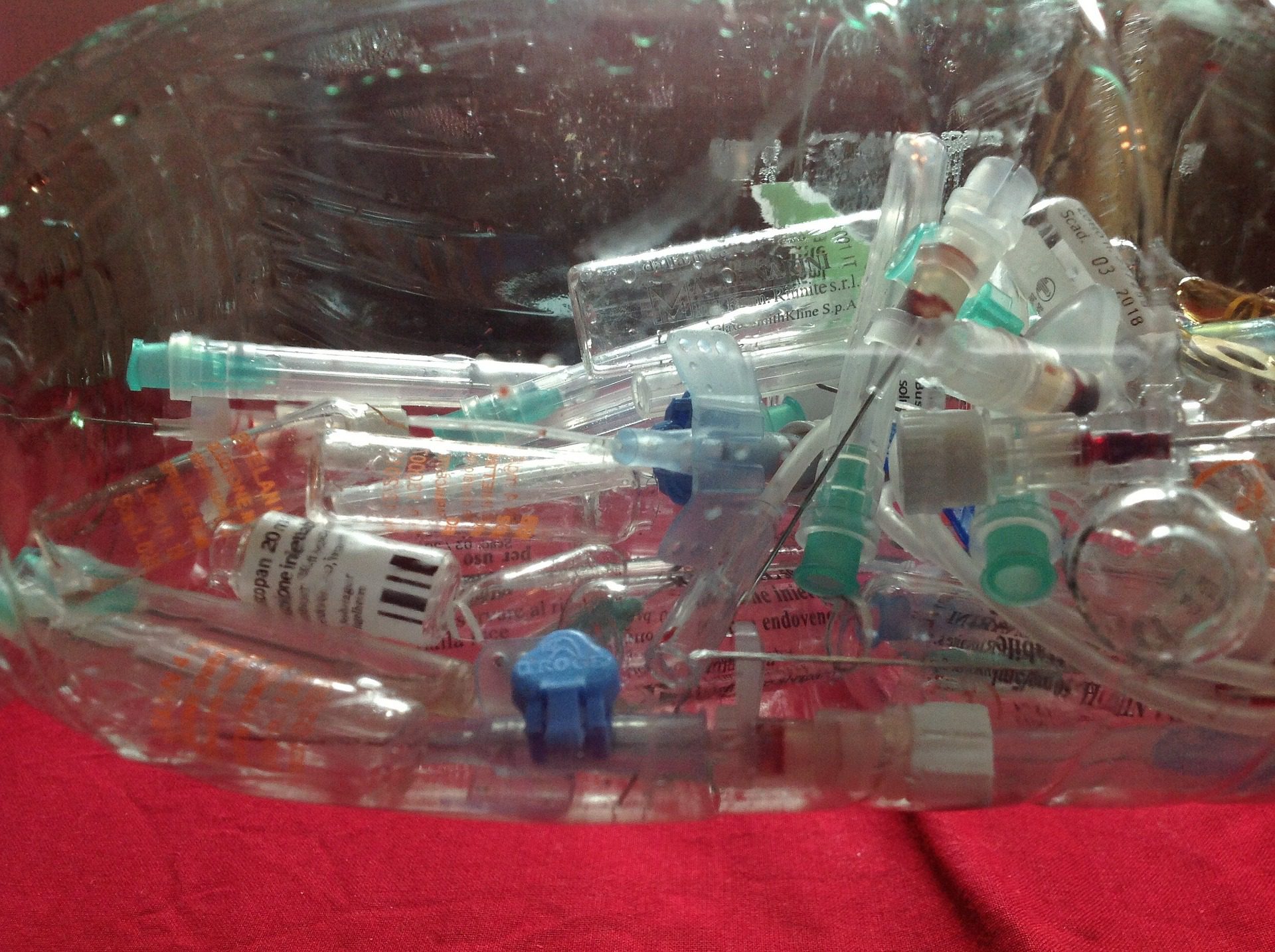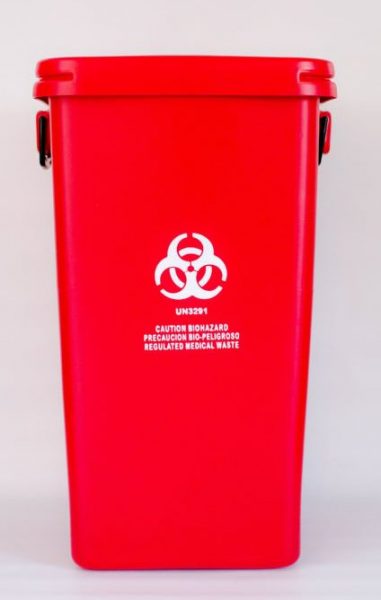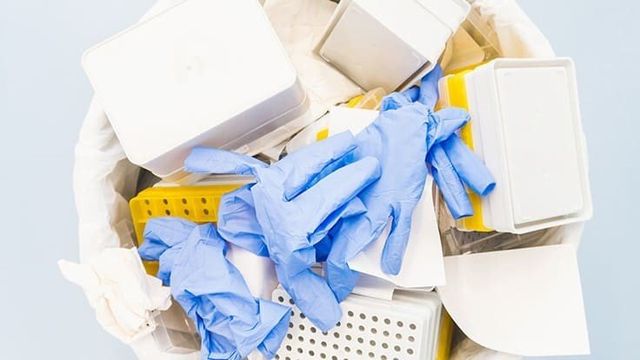Medical Waste Removal Proficiency: Where Service Quality Fulfills Health Criteria
Medical Waste Removal Proficiency: Where Service Quality Fulfills Health Criteria
Blog Article
Remain Ahead of Rules: Expert Suggestions on Medical Waste Disposal
In a globe where the health care sector is continuously evolving, it is critical for medical centers to remain ahead of laws when it comes to the appropriate disposal of medical waste. From understanding the different categories of medical waste to applying the right collection and segregation methods, this conversation will supply valuable insights and actionable suggestions to help facilities remain ahead of regulations in the ever-changing landscape of clinical waste disposal.
Comprehending Clinical Waste Categories
Comprehending medical waste classifications is necessary for proper disposal and monitoring in healthcare centers. Clinical waste refers to any waste generated by healthcare activities that might present a danger to public health and wellness or the setting. It is crucial to categorize medical waste properly to guarantee its safe handling, disposal, treatment, and transportation.
There are a number of categories of clinical waste that medical care facilities require to be accustomed to. One of the most usual groups consist of infectious waste, pathological waste, sharps waste, pharmaceutical waste, and chemical waste. Each group has specific guidelines and policies for its appropriate monitoring and disposal.
Contagious waste consists of materials polluted with blood or other physical liquids, such as gloves, gowns, and lab societies. Pathological waste describes human tissues, body organs, or body parts that call for special delivery and disposal. Sharps waste includes utilized needles, syringes, and other sharp objects that can create injury and send infections. Pharmaceutical waste makes up expired, unused, or contaminated medicines that require careful handling and disposal. Chemical waste consists of solvents, disinfectants, and other chemical substances utilized in medical care facilities.
Staying Up-To-Date With Regulatory Changes
Staying present with regulatory adjustments is vital for health care centers to ensure conformity and proper monitoring of clinical waste disposal. medical waste removal service. With laws frequently progressing, it is crucial for medical care centers to stay updated to prevent penalties, fines, and potential damage to the atmosphere and public health
To remain in advance of regulative modifications, healthcare centers need to establish a system for monitoring and monitoring updates. This can be done by registering for regulative newsletters, participating in workshops and conferences, and proactively taking part in market organizations. In addition, facilities should mark a personnel or team in charge of staying educated and distributing details to appropriate stakeholders.
Normal communication with regulatory firms is additionally vital. Healthcare centers ought to develop relationships with neighborhood, state, and federal companies to guarantee they are aware of any type of changes in policies that might impact their waste administration techniques. This can be done through routine conferences, engagement in public comment periods, and positive involvement with regulatory companies.
Moreover, healthcare centers ought to take into consideration partnering with waste administration firms that focus on clinical waste disposal (medical waste disposal services with WasteX). These business are usually well-versed in the most current guidelines and can give guidance and support to guarantee conformity
Applying Correct Collection and Partition Methods
To efficiently handle clinical garbage disposal, health care centers need to develop correct collection and partition approaches according to governing standards. Carrying out these approaches makes certain the secure handling and disposal of possibly harmful products, safeguards the atmosphere, and reduces the risk of infections and injuries to healthcare workers and the basic public.
Correct collection and segregation methods involve using marked containers and identifying systems. Health care facilities should provide plainly identified containers for different sorts of clinical waste, such as sharps, contagious waste, pharmaceutical waste, and non-hazardous waste. These containers must be color-coded and clearly marked to avoid complication and promote simple identification.
Additionally, healthcare centers ought to train their team on the right procedures for collecting and setting apart medical waste. This consists of informing them on the different kinds of waste, the proper containers to make use of, and the value of complying with policies and standards. Routine training sessions and refresher programs ought to be performed to guarantee that team member remain updated on best methods.
Additionally, medical care facilities need to establish a system for normal collection and disposal of medical waste. This might involve partnering with accredited waste administration firms that focus on clinical waste disposal. These business will certainly guarantee that the accumulated waste is carried and gotten rid of in conformity with regulatory demands.
Picking the Right Disposal Methods

Incineration is just one of one of the most usual and effective methods for you could try here getting rid of specific kinds of clinical waste, such as pathological waste and sharps. It involves the regulated burning of waste at heats, minimizing it to ash. However, incineration can launch harmful pollutants right into the air and add to air contamination.

Various other disposal techniques consist of chemical treatment, microwave treatment, and landfilling. Chemical therapy involves the usage of chemicals to disinfect and counteract the waste. Microwave treatment makes use of microwave energy to warm and disinfect the waste. Landfilling includes hiding the waste in an assigned land fill area (medical waste disposal services with WasteX). Landfilling should be the last resort due to the possible risk of contamination to soil and groundwater.
Ensuring Compliance Via Documentation and Training
After thoroughly taking into consideration the ideal disposal techniques for clinical waste, medical care centers need to guarantee conformity with regulations and lessen environmental influence by executing efficient documents and training treatments. This action is vital in keeping a secure and sustainable setting for both medical care employees and the general public.

Healthcare employees that take care of medical waste ought to obtain suitable training on waste segregation, handling, and disposal treatments. By giving comprehensive training, healthcare facilities can empower their personnel to make informed choices and minimize the risk of inappropriate waste disposal.
Final Thought
In verdict, remaining ahead of regulations in clinical garbage disposal is important for healthcare facilities. medical waste removal service. Comprehending the different categories of clinical waste, staying upgraded with regulative changes, implementing appropriate collection and segregation techniques, choosing the ideal disposal approaches, and making sure conformity via documents and training are all important actions. By complying with these standards, healthcare companies can successfully handle and get rid of of medical waste in a safe and liable way
From comprehending the different classifications of medical waste to implementing the ideal collection and segregation methods, this conversation will certainly offer actionable pointers and valuable insights to help centers stay ahead of laws in the ever-changing landscape of medical waste disposal. - medical waste disposal services with WasteX
The most Learn More typical groups consist of contagious waste, pathological waste, sharps waste, pharmaceutical waste, and chemical waste. Health care facilities should supply plainly classified containers for different kinds of medical waste, such as sharps, transmittable waste, pharmaceutical waste, and non-hazardous waste. Health care centers ought to establish an extensive system to videotape and track all aspects of clinical waste disposal, consisting of kinds of waste created, quantities, and disposal techniques made use of. Healthcare employees that handle medical waste should obtain suitable training on waste segregation, dealing with, and disposal procedures.
Report this page